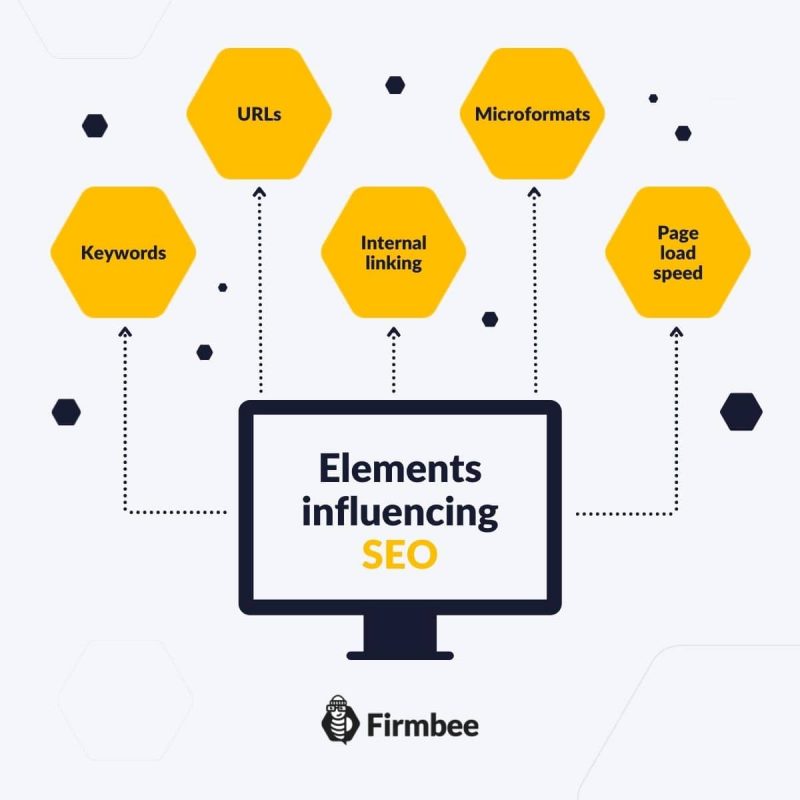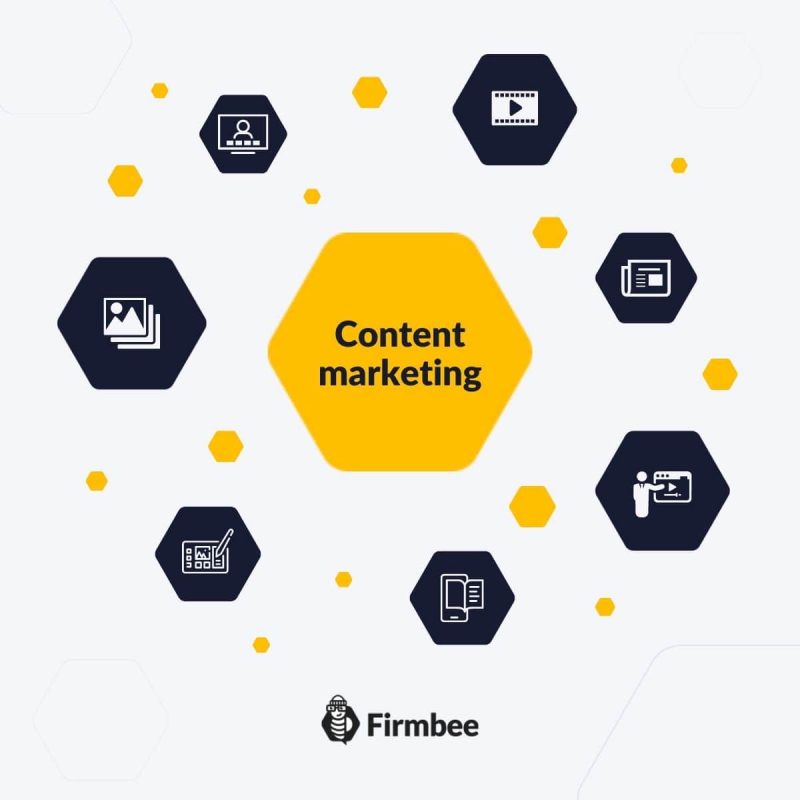As online sales grow, so does the competition. More and more companies are choosing to operate their store online. How to attract customers? How to stand out in the crowd? What is online store marketing? If these questions hover over your head on daily basis, read our article to find out the answers and more.
Online store marketing – table of contents:
Online store marketing strategy
Having a marketing strategy for your online store is crucial but what is exactly such a strategy? It is a carefully developed plan that focuses on defining long-term goals and ways to achieve them. First, marketing goals should be included, but also an analysis of past activities, an analysis of the target audience, the company’s vision and mission, and a competitive analysis.
Marketing channels for an online store
- SEO
- Keywords – Obviously all owners what their store to appear in the first search results must first thoroughly analyze and pick the right keywords.
- URLs – URLs should be properly arranged according to the keywords and themselves. The structure of the store must therefore be arranged logically and contain the phrases typed and their intentions. Each URL should have its unique title, description and H1, H2 headers.
- Internal linking – Another element of SEO is internal linking. In this activity, individual sections link to other sections in the store, e.g., the main menu links to categories.
- Microformats – From the SEO point of view, it is also a good practice to use microformats or structured data. Such information, placed in the HTML code, shows robots what a given element is. From an e-commerce point of view, they can be used to show such elements as product price, brand, user rating, etc.
- Page load speed – This has a big impact on conversions, as customers prefer to go to a competing site instead of waiting. One of the elements that can slow down the page load speed is the use of images with too high definition.
- Content marketing
- photos,
- videos,
- articles,
- e-books,
- infographics,
- tutorials,
- webinars.
- Advertising campaigns
- Social media marketing
- Influencer marketing
- E-mail marketing
- Remarketing
SEO provides great opportunities for online store development. It enables you to attain traffic directly from the search engine because it is where customers type in the keywords they are interested in. Thus, they expect the engine will take them there.
Elements influencing SEO:

Content marketing is the creation and publication of valuable content. They are meant to help promote the brand and build its image, as well as respond to user needs. This form of marketing works very well to build engagement and long-term relationships with customers.
Content marketing consists of various elements. Among the most popular are:
Choosing the right form according to your business profile and target audience.
The most popular in terms of search engine is Google. For this reason, investing in ads on Google seems to be the right thing to do. Text advertising is a classic and popular form of advertising on Google. It consists in selecting the most important keywords, which will be used to prepare ads. This solution will work well in the early stages of sales, when users are not looking for a specific product model, but are just doing some preliminary research.
DSA campaigns, i.e., dynamic search ads, are also an interesting supplement. This solution does not require specifying particular keywords. When a user types a given keyword into the search engine, Google automatically displays the appropriate sub-page on the website and generates advertising content. This is an ideal solution, especially for developed stores, which find it difficult to advertise with all key phrases.
Product ads are displayed to the user in the form of a carousel of product photos, along with their descriptions, prices, and direct links to product cards. The store owner has no direct influence on which keyword phrases the product is displayed for.
Social media marketing is all the activities that, with the help of social media, aim to generate traffic to the website. Marketing through such platforms enables you to build your brand image and communicate between it and your customers.
Social media also features paid advertising campaigns. People interested in creating ads on Facebook, Instagram, or Messenger can use a tool such as the Ads Manager. It allows you to collectively create, manage and monitor campaigns.
Influencers are called online creators who are active in social media. A brand can leverage the popularity of such a person to reach a specific audience. In this way, the bond and trust of the community with the influencer thrive.
Cooperation with influencers focuses on their endorsement and other marketing activities concentrated on particular selected products. Such advertising is included in the material prepared by the creator, such as a special post on Instagram or a video on YouTube. In this way, the brand and its products are presented to the audience.
Influencer marketing is an effective form of advertising because users rely on their trust in the creator. They treat him as a friend whose recommendation makes them more likely to buy a given item. Internet users also like to use what has already been tested by another person.

E-mail marketing is a form of direct marketing, the purpose of which may be to sell, promote a store’s assortment, build brand awareness and image, or maintain relationships with customers. According to Knista1 statistics, 4.03 billion people around the world are already using e-mail in 2021.
The effectiveness of email marketing is backed by data that says the average open rate is 18%, while the average click-through rate is 2.6%. Depending on the type of industry, these rates vary.
Remarketing is a way for a company to reach out again to a customer who has already interacted with their website once. Such ads are displayed to the user when they use other sites.
To take advantage of remarketing, a company must have an appropriate script on their website, known as “Cookies”. Additionally, each sub-page should have its code. Such scripts make it possible to collect data about the user’s activity: what pages the user viewed on the website, what choices he or she made, how long it took. The analysis of such information allows, at a later stage, to precisely adjust the advertisement to the client.
The budget
It’s difficult to give a definite answer as to what budget should be spent on the marketing activities of an online store. It will depend, among others, on the industry in which the company operates and the competition. You can begin your adventure with marketing by choosing only a few channels, the number of which will gradually increase along with the appropriate budget for this purpose.
If you like our content, join our busy bees community on Facebook and Twitter.
Author: Andy Nichols
A problem solver with 5 different degrees and endless reserves of motivation. This makes him a perfect Business Owner & Manager. When searching for employees and partners, openness and curiosity of the world are qualities he values the most.
The most important questions
-
What is a marketing strategy for an online store?
It is a long-term, precise blueprint defining the goals of the company and the way of achieving them.
-
What are the channels of online marketing?
The main channels include SEO, content marketing, ad campaigns, social media marketing, influencer marketing, email marketing, and remarketing.
-
What budget to prepare?
The final budget for marketing depends on the number of channels, the industry the company operates in, and the competition.


















